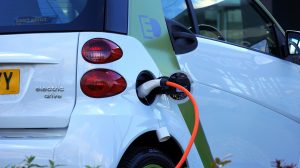
The utilities sector is a highly dynamic environment which has undergone major changes, particularly from the perspective of the end user. These changes have generated new opportunities, but are also forcing services companies to reinvent themselves continuously, due to the emergence of new technologies, new competitors, legislative changes, etc.
There are two key challenges within the sector: client search for models of efficiency and new mobility models, amongst these the increased presence of electric vehicles.
Users setting the management model
As for the first of these challenges, energy services contracts in Spain have revolutionised the energy management model from the user’s perspective, significantly improving productivity.

Image: Pixabay
Today, companies oversee design, solutions, energy acquisition, operation and maintenance and facility life cycle, and this has contributed to a marked reduction in energy consumption and emissions. This model has completely changed the way in which utilities contracts functioned, since the risk on energy consumption, design and operation of the facilities now lie with the company, rather than with the client.
In this sense, the sector has seen major changes, such as in legislation, with a strong impact on renewable energies and efficiency. Other changes are technological in nature, such as LED lighting: a technology which is highly valued today but which some years was highly questioned as to its feasibility in certain areas such as public lighting, where there are now numerous successful projects. And, finally, macroeconomic changes, with public institutions, companies and users having to modernise facilities and reduce operating costs at a time when access to funding was a serious constraint for sectoral growth.
Today, thanks to financial stability, this is no longer the case and there is significant support available to promote solutions of this type, especially for the public sector.
New mobility models
The second key challenge within the energy services sector are new mobility models and the emergence of electric vehicles, which are providing a shift in the market towards a more disaggregated demand and an efficient network to allow growth and expansion of solutions of this type, with users increasingly demanding such services. One example of this is ZITY, the Ferrovial Services car sharing scheme which currently has a fleet of 500 cars operating in Madrid.

Image: Pixabay
In short, we can say that the energy efficiency market is dynamic and competitive. Clients are ever more demanding, and this forces companies to improve our processes, become more efficient and innovate. The market has grown rapidly, and the number of competitors is increasing, which means that the only way of achieving competitive advantage is through the development of new digital solutions and providing added value. An example is the EMMOS tool, which detects changes, controls consumption and enables a response to any kind of incident. Moreover, artificial intelligence and machine learning technologies are being used to predict trends and improve processes.
The energy services contract model in the SME market, and more particularly in the Spanish market, are areas to be explored. The domestic sector is aware of all the solutions and technologies available on the market, and is highly committed to emissions reductions.





There are no comments yet